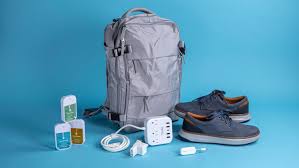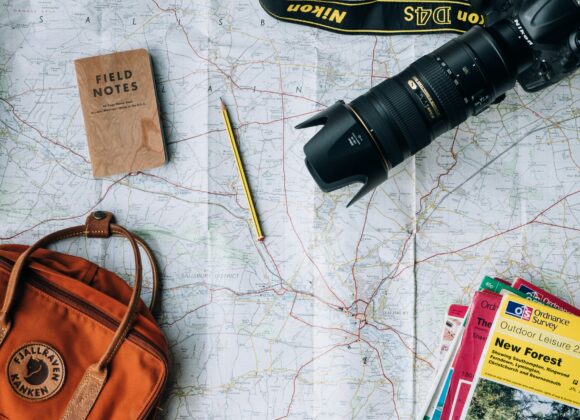Europe is a dream destination for many travelers, offering a rich tapestry of cultures, cuisines, landscapes, and languages. Whether you’re planning to wander through the romantic streets of Paris, hike the rugged trails of the Scottish Highlands, or soak up the sun on the Amalfi Coast, one thing is certain: packing smart can make or break your trip.
This step-by-step packing guide is designed to help you prepare efficiently and confidently. It covers everything from luggage choices to clothing, tech gear, and travel hacks—so you’ll never be caught off guard. Let’s dive into the essential things to pack for a Europe trip and how to organize them like a pro.
🗺️ Step 1: Understand Your Itinerary and Climate
Before you start packing, take a close look at your travel itinerary. Europe’s climate varies dramatically depending on the region and season. A summer trip to Spain will require vastly different gear than a winter getaway to Norway.
🔍 Research Your Destinations
- Southern Europe (Spain, Italy, Greece): Expect warm, sunny weather in summer. Lightweight clothing, sun protection, and swimwear are essential.
- Northern Europe (UK, Germany, Scandinavia): Cooler temperatures and unpredictable rain. Pack layers, waterproof jackets, and sturdy shoes.
- Eastern Europe (Poland, Hungary, Romania): Seasonal extremes—hot summers and cold winters. Adapt your wardrobe accordingly.
Knowing what to expect helps you avoid overpacking and ensures you bring the right items for each location.
👕 Step 2: Build a Capsule Wardrobe
A capsule wardrobe is a minimalist approach to packing that focuses on versatile, mix-and-match pieces. It’s perfect for Europe, where style and practicality go hand in hand.
👗 Clothing Essentials
- 3–4 tops: Neutral colors that can be layered.
- 2–3 bottoms: Jeans, trousers, or skirts.
- 1–2 dresses or dress shirts: For evenings or special occasions.
- 1 lightweight jacket or blazer: Stylish and functional.
- 1 raincoat or windbreaker: Especially for spring and fall.
- 1–2 scarves: Great for warmth and modesty in religious sites.
- Undergarments and socks: Enough for a week, plus laundry options.
👟 Footwear
- Comfortable walking shoes: Europe’s cobblestone streets demand sturdy soles.
- Dress shoes or sandals: For dinners or events.
- Flip-flops: Useful for beaches or hostel showers.
Packing light doesn’t mean sacrificing style. Europeans tend to dress smartly, so aim for neat, well-fitted clothing that transitions easily from day to night.
🧼 Step 3: Toiletries and Personal Care
Toiletries are among the most important things to pack when traveling to Europe, especially if you have specific preferences or sensitivities.
🧴 Toiletry Checklist
- Travel-size shampoo, conditioner, body wash
- Toothbrush, toothpaste, floss
- Deodorant
- Razor and shaving cream
- Moisturizer and sunscreen
- Lip balm with SPF
- Feminine hygiene products
- Hairbrush or comb
- Makeup (if used)
- Nail clippers and tweezers
🩺 Health Essentials
- Prescription medications (with copies of prescriptions)
- Over-the-counter meds (pain relievers, allergy pills, motion sickness tablets)
- First-aid kit (band-aids, antiseptic wipes, blister pads)
- Hand sanitizer and face masks
Tip: Use a hanging toiletry bag to keep everything organized and accessible in small European bathrooms.
🔌 Step 4: Tech and Electronics
Europe’s plug types and voltage vary by country, so it’s crucial to pack the right adapters and gadgets.
⚡ Must-Have Tech Items
- Universal travel adapter: Covers multiple plug types.
- Portable charger: Keep your phone alive during long sightseeing days.
- Phone and charger: Consider an international SIM or eSIM.
- Headphones or earbuds: Noise-canceling versions are great for flights and trains.
- Camera or smartphone with good photo capabilities
- VPN subscription: Protect your data on public Wi-Fi.
- E-reader or tablet: For entertainment and travel guides.
Optional but useful: travel power strip, laptop, smartwatch, and Bluetooth tracker for your luggage.
💼 Step 5: Luggage and Packing Tools
Choosing the right luggage is one of the most overlooked things to pack for a Europe trip. European cities often have narrow staircases, cobblestone streets, and limited elevator access.
🧳 Luggage Tips
- Carry-on suitcase: Ideal for short trips and budget airlines with strict limits.
- Travel backpack: Great for mobility and backpacking adventures.
- Checked luggage: Only if necessary—be mindful of weight and size restrictions.
🧩 Packing Accessories
- Packing cubes: Organize clothes by category.
- Compression bags: Save space for bulky items.
- Laundry bag: Keep dirty clothes separate.
- Reusable tote or daypack: For groceries, souvenirs, or day trips.
- RFID-blocking wallet or neck pouch: Protect against pickpockets.
📄 Step 6: Documents and Money
Europe is generally safe, but losing your documents or money can derail your trip. Prepare backups and secure storage.
📑 Essential Documents
- Passport (with at least 6 months validity)
- Visa (if required)
- Travel insurance
- Flight and accommodation confirmations
- Emergency contacts
- Copies of prescriptions
- Student ID (for discounts)
💶 Money Matters
- Credit/debit cards (notify your bank before travel)
- Some cash in local currency
- Currency converter app
- Budget tracker app
Tip: Keep digital copies of all documents in a secure cloud folder and print hard copies as backups.
🧠 Step 7: Travel Hacks and Extras
These are the little things that make a big difference.
🧳 Handy Extras
- Travel pillow and eye mask for long flights
- Reusable water bottle (Europe has great tap water)
- Travel umbrella
- Sleep sheet (for hostels or budget hotels)
- Snacks (protein bars, nuts)
- Travel laundry detergent and sink stopper
- Ziplock bags (for wet clothes or snacks)
- Pen and small notebook
🧭 Safety and Comfort
- Learn basic phrases in local languages
- Download offline maps
- Use Google Translate or similar apps
- Check local customs and dress codes
- Register with your embassy if needed
📋 Final Checklist: Things to Pack When Traveling to Europe
Here’s a consolidated checklist to help you pack with confidence:
| Category | Items |
|---|---|
| Clothing | Tops, bottoms, jacket, scarf, underwear, shoes |
| Toiletries | Shampoo, toothpaste, deodorant, sunscreen, first-aid kit |
| Tech | Adapter, charger, phone, VPN, headphones |
| Travel Tools | Packing cubes, laundry bag, daypack, RFID wallet |
| Documents | Passport, visa, insurance, bookings, emergency contacts |
| Money | Cards, cash, budget app, currency converter |
| Extras | Water bottle, snacks, umbrella, sleep sheet, notebook |
Sources:
✈️ Bonus Tips for Packing Like a Pro
- Pack light: You’ll thank yourself when navigating train stations or walking to your hotel.
- Leave room for souvenirs: Europe is full of irresistible finds.
- Check airline baggage policies: Especially for budget carriers.
- Use a packing app: Helps track what you’ve packed and what’s left.
- Roll clothes instead of folding: Saves space and reduces wrinkles.
🧭 Conclusion: Travel Light, Travel Right
Packing for Europe doesn’t have to be stressful. With this step-by-step guide and a clear understanding of the things to pack when traveling to Europe, you’ll be ready for anything—from spontaneous day trips to elegant dinners. The key is to plan ahead, pack smart, and stay flexible.
Europe awaits—with its castles, coastlines, and cafés. So zip up that suitcase, grab your passport, and get ready to explore with confidence.
Would you like me to turn this into a downloadable checklist or tailor it for a specific country like France or Italy?




